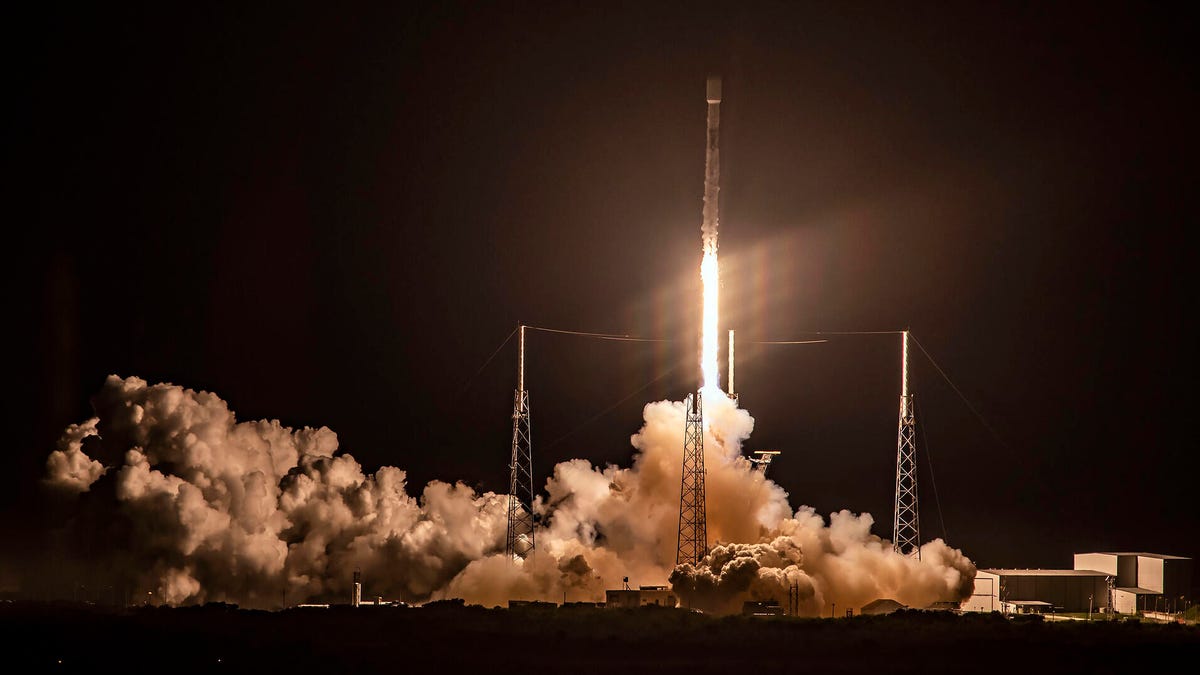SpaceX launches first batch of Starlink satellites wearing sun visors
SpaceX sends its next big batch of Starlink satellites into space and these ones are equipped with shades to reduce their brightness.

A previous night time Starlink launch, on June 3. Today's looked like this too, we promise.
Under the cover of darkness early Friday morning, SpaceX launched its ninth operational flight of the broadband-capable Starlink satellites. The launch suffered three delays reaching back to late June because of weather and extra technical checkouts. The long-time-coming-launch achieved lift-off at approximately 1:12 a.m. ET (10:12 p.m. PT), when the company's workhorse Falcon 9 rocket ascended in a blaze of fire and smoke from Cape Canaveral Air Force Station in Florida.
The first stage of the rocket booster returned to Earth and completed a perfect landing on the Of Course I Still Love You droneship stationed in the Atlantic. SpaceX also noted it will attempt to catch the rocket's fairing halves, as they did during the ANASIS-II launch on July 20.
The mission's payload included two rideshare satellites and the first batch of SpaceX's broadband satellites equipped with a sunshade to reduce their brightness, which has been a sore point for many stargazers.
Since Elon Musk's company began launching the small satellites over a year ago, astronomers and other observers have been surprised and even disturbed by the amount of sunlight the orbiting routers reflect, often interfering with scientific observations.
Musk and SpaceX have been working with major astronomical organizations on the problem and have pledged to fix the issue as they ramp up plans to launch tens of thousands of the satellites in the coming years. Initially, SpaceX tried launching a so-called "darksat," which was essentially a Starlink satellite with a dark coating, but the results from this approach were mixed. Next the company developed and tested a deployable sunshade that it calls VisorSat.
One VisorSat-equipped satellite was launched earlier this month to test the new tech and the next launch will carry the first batch of satellites to be fully shaded. It has yet to reach its orbit, according to SpaceX, but that hasn't stopped the company from launching the next batch with the same visor.
You can rewatch the launch below or at CNET's YouTube channel:
It's been quite the week for SpaceX. On Sunday, the Crew Dragon returned to Earth from the International Space Station, splashing down in the Gulf of Mexico on Sunday. In addition, the SN5 Starship prototype completed a short "hop" at the SpaceX facility in Boca Chica, Texas. The thermos-shaped prototype, a precursor to a potential Mars-bound spaceship, launched 500 feet into the air and nailed the landing, leading Musk to quip "Mars is looking real."



